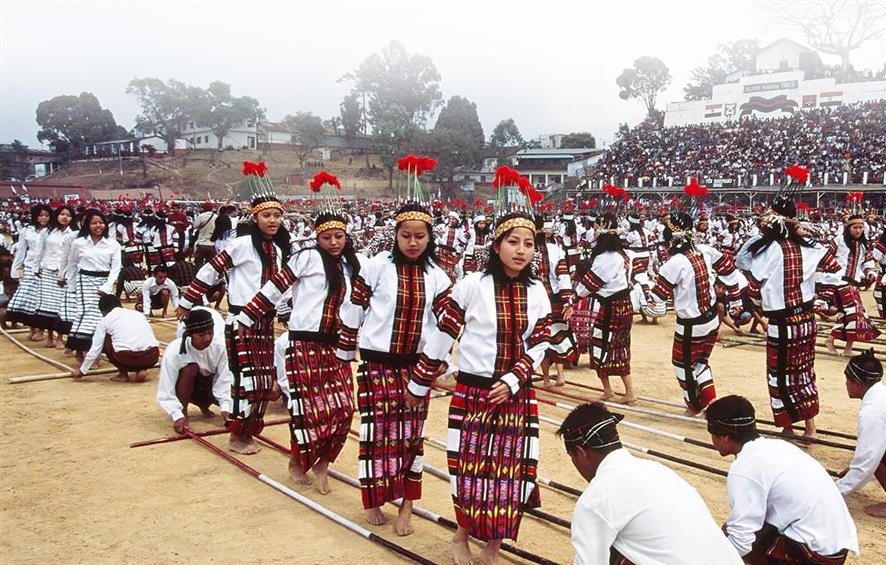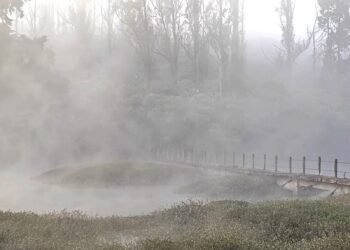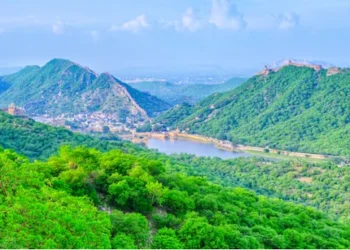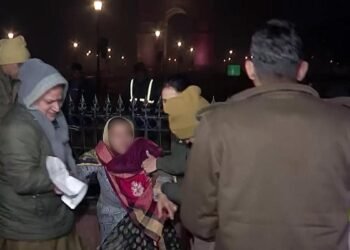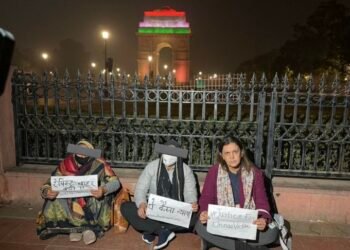In a detailed statement, ‘Young Kuki’ challenges Liangchi’s narrative, presenting evidence of Kuki political participation, historical presence, and refuting claims of refugee status while accusing NSCN-IM of genocide.
BY PC Bureau
A fierce and meticulously documented battle of historical narratives has erupted in Manipur, as a group identifying itself as “Young Kuki” launched a scathing, point-by-point rebuttal against freelance journalist Dirinamai Liangchi’s claims regarding Kuki history and identity. The statement, titled “Stand Firm, Stand United Kuki Kahi Kakipah E,” is a declaration of war against what the group labels “historical fabrication, cherry-picked distortions, and outright propaganda,” promising to “dismantle his lies permanently” and silence further debate.
The ongoing exchange between Liangchi and Young Kuki, an organization representing the younger Kuki populace, has drawn sharp attention in Manipur. The debate centers on the legitimacy of the Kuki people’s historical association with the region and counters Meitei assertions that Kukis were illegal settlers.
In an article titled Behind the Veil: Kuki’s Controversial Identity and the Conflict That Persists, Liangchi durst accused the Kuki community of “misquoting and distorting historical facts in a desperate attempt to mislead the public about their immigrant status.” The article, published in The Ukhrul Times, a publication that Kukis have dubbed as NSCN (I-M) sympathizers, triggered a fierce reaction from Young Kuki.
In a rebuttal published in The Ukhrul Times on February 21, Liangchi stood by his original assertions and accused Young Kuki of deliberately twisting his words and manipulating historical evidence to fit their narrative. He dismissed their arguments as “a feeble attempt to cover up their own ignorance and deep-seated biases.” The Young Kuki has now issued a detailed rebuttal to assert their identity and origin.
The Young Kuki’s tried to make sure that their rebuttal is s not a mere opinion piece; but a meticulously sourced indictment, filled with direct quotes from historical records, electoral data, and colonial documents. The group accused Liangchi of “intellectual dishonesty,” “deep-seated biases,” and a reliance on “outdated NSCN-IM propaganda narratives.” They paint a picture of Liangchi as a “jobless propagandist who thrives on disinformation,” whose arguments “reek of desperation” and are designed to “cover up his own ignorance.”
#Article: Misrepresenting the Electoral Timeline
My discussion regarding Kuki overrepresentation in #Manipur’s elections specifically focused on the 1962-1967 Territorial Election, yet Young #Kuki, with deliberate intent, responded by referencing the 1967 election, which is a… pic.twitter.com/Kvj3LucPTK— Ukhrul Times (@ukhrultimes) February 21, 2025
Electoral Records as Weapons: Shattering the “Fiction”
The group’s attack begins with a direct assault on Liangchi’s claim that Kukis were politically insignificant before 1980. They present electoral records as irrefutable evidence:
- 1952 Manipur Territorial Council Elections: “Liangchi peddles the fiction that Kukis were not politically significant in Manipur before 1980. The actual election records demolish his propaganda. In the 1952 Manipur Territorial Council elections for a total 30 seats, the Kukis contested 11 seats: • Kuki National Assembly (KNA): 7 seats • Mizo Union: 2 seats • Paite National Council: 1 seat • Independent: 1 seat. The Kukis won 4 seats, distributed as follows: • Kuki National Assembly (KNA): 2 seats • Mizo Union: 1 seat • Independent: 1 seat. (Source: Electoral Politics in Manipur, pp. 29-31, https://ia801500.us.archive.org/29/items/in.ernet.dli.2015.119111/2015.119111.ElectoralPolitics-In-Manipur.pdf)”
- 1972 Manipur Legislative Assembly Elections: “In the 1972 Manipur Legislative Assembly elections, Kukis secured 6 seats: • Saitu (ST) • Tipaimukh (ST) • Thanlon (ST) • Henglep (ST) • Singhat (ST) • Churachandpur (ST) : Paolen (INC) : Ngurdinglien (IND) : N Gouzagin (IND) : Holkhomang (INC) : Thangkhanlal (INC) : Haokholal Thangjom (INC) (Source: https://www.elections.in/manipur/assembly-constituencies/1972-election-results.html)”
- They also add that “Sadar Hills (now Kangpokpi) was unfairly merged with a valley constituency (Sagolmang) in 1957, depriving Kukis of fair representation. Meanwhile, Mao areas had two separate constituencies (Mao East and Mao West), despite having a smaller population than Kangpokpi. (Manipur Gazette, 27 March 1957, pp.1-4)”
ALSO READ: Nagaland Church urges Chhattisgarh CM to Act on Hate Speech Threatening Christians
Young Kuki delivers yet another fact-based rebuttal, dismantling Liangchi’s false narrative. The historical truth stands strong and no propaganda can erase it. Lies will never replace facts.@ukhrultimes pic.twitter.com/JCl8qPLueo
— Young Kuki (@young_kuki) February 22, 2025
The Cheitharol Kumbaba and the “Glaring Contradiction”
Young Kuki then turns to the historical record, specifically the Cheitharol Kumbaba, to challenge Liangchi’s claims about Kuki origins:
- “One of Liangchi’s most blatant distortions is his attempt to erase Kuki history by falsely claiming that Kukis have no historical roots in Manipur. However, Cheitharol Kumbaba, the royal chronicle of Manipur, does not even mention the word ‘Naga’ until the 19th century, yet it records rulers with Kuki names dating back to ancient times.”
- “Khongsai = Kuki. British colonial records already identified Khongsai as Kukis.”
- “Tripura Copper Plates (12th century) mention Kukisthanan (Land of the Kukis), proving the Kuki presence long before British rule.”
- “Taranatha’s Buddhist texts (17th century) explicitly refer to Ko-Ki (Kuki) country as an established settlement.”
- “Cheitharol Kumbaba itself mentions rulers with Kuki names such as Taothingmang (264 AD), Naokhampa (411 AD), and Konthoupa (568 AD).”
ALSO READ: Amid NPP Opposition, First Looted Weapons Surrendered in Manipur
Denying Refugee Status, Accusing NSCN-IM of Genocide
The group vehemently rejects the notion that Kukis were refugees, providing a detailed account of their displacement and repatriation:
- “Some Kukis, along with other Indian citizens, were expelled from Burma by General Ne Win after his 1962 military coup. Over 300,000 Indians, including Kukis and Tamils (who were later resettled in Moreh), were forcibly expelled during Ne Win’s anti-Indian purge. During the Khodawmi operations, these displaced Kukis were repatriated by the Indian Government and reinstated as Indian citizens and resettled in Kuki territory.”
- They directly accuse the NSCN-IM of ethnic cleansing: “Between 1992 and 1997, NSCN-IM executed one of the bloodiest ethnic cleansing campaigns in Northeast India. Over 1,000 Kukis, including women, children, and elderly, were murdered by NSCN-IM cadres. More than 360 Kuki villages were burned down, their residents massacred, and over 100,000 Kukis were forcibly displaced.”
- They provide harrowing examples: “The infamous Joupi Massacre (1993): 88 Kukis, including children, were slaughtered by NSCN-IM militants in one of the most gruesome acts of genocide. The Tamei Massacre (1993): NSCN-IM militants executed dozens of Kukis in cold blood as part of their campaign to wipe out Kuki settlements. The 1992 “Quit Notice” Order: NSCN-IM openly issued a public declaration demanding that all Kukis leave Naga-dominated areas or face extermination.”
Kuki Ancestral Land and Historical Alliances
The group emphasizes the vastness of Kuki territory and their historical relationships with other communities:
- “Unlike his community, which is confined to a small geographical area, Kuki territory extends across India, Burma, and Bangladesh, forming an unbroken historical and cultural continuum.”
- “Kuki Chiefs protected the Zeliangs from Angami raids, with notable settlements in Henima (Tening), Paona, Chamcha, Kholuilen, Jolpi, Tolpi, Kaimai, and Mechangbung. Kuki Chief Hotinmang even swore an oath of brotherhood with the Zeliangs to ensure their protection.”
- “Kukis played a key role in the early Naga movement, with Pu Lengjang Kuki being a signatory to the 1929 Simon Commission memorandum and Kukis like Seikhohen Kuki and Jangkhosei Kuki being elected to the Naga National Council (NNC).”
“Intellectually Destroyed” and a Warning
The statement concludes with a declaration of victory: “This rebuttal is so brutal and fact-based that even an idiot can understand why Liangchi’s arguments are laughable and pathetic. If he dares to respond, his words will be treated as the ravings of a desperate fraud because Young Kuki will not waste time engaging with a proven liar. End of Discussion This discussion is over.”
The statement, attributed to “The Young Kuki,” ends with the biblical quote: “Proverbs 19:9 – ‘A false witness will not go unpunished, and he who breathes out lies will perish.’” This intense exchange lays bare the deep historical and political fault lines in the region, highlighting the ongoing struggle over identity and historical interpretation.


